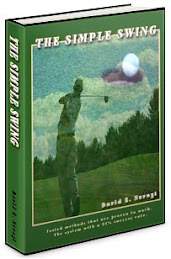If you've reached this article, you're probably wanting to know about disc golf. I'll be happy to tell what I know about this fun pastime.
First of all, it is called disc golf, not Frisbee golf. Frisbee is a registered name belonging to the Wham-O corporation, from what I've been told. Frisbees are the typical toys you're probably more accustomed to seeing at the beach, at the park or for playing with your dog. They are generally easy to throw, easy to catch, and fun to play around with.
A disc golf disc, on the other hand, is not as large, not so soft, and is not something you want to catch. If you got hit with one, you might get hurt, so be careful.
Now that you know what we throw, let's talk about the activity itself. Disc golf is similar to normal golf. Individuals work to get from a tee box to a target. Only instead of using balls and clubs, like in "ball golf," disc golfers throw a variety of discs. Also, instead of having a hole in the ground with a flag pin, disc golfers aim at a specially created basket. These targets consist of a pole that supports a set of chains that work to catch the flying disc and a basket underneath. The goal is to hit the chains with your disc and have it remain suspended in the chains or in the basket.
In ball golf, the golfers use a variety of clubs to approach the hole and put the ball in. Likewise, disc golfers use a variety of discs to approach the target. There are are three general classes of discs: drivers, mid-range and putters. Pros can throw a driver over 500 feet, but a recreational player feels pretty good with anything over 300 feet.
In addition to the three classes of discs, there are a variety of disc designs that affect how the disc travels in the air. Discs can be overstable, stable, or understable. For a right handed backhand throw an overstable discs will curve to the left throughout the flight. A stable disc will fly mostly straight and then fade left as it slows down. An understable disc will curve to the right through most of the flight, but fade a bit left as is slows. A golfer can use these discs to navigate difficult holes.
One of the best things about disc golf is that, once you have equipment, it is usually free to play. Disc golf courses are shorter than traditional courses and therefore require less land. In addition, they do not require the maintenance, watering or mowing that a regular course requires. In fact, disc golf courses are often placed in underused parts of local, regional or state parks. There are now almost 3000 places in America to play.
One of the main benefits of disc golf is that there is a very low financial commitment to beginning. Sure, many people spend money on fancy golf bags, high-end plastic and other perks, but you can get started with just a few items and a bag or backpack to carry them in.
That's about all I will write on this subject today, but look for more posts here about disc golfing. I'll be discussing disc golf courses, equipment and technique in more detail soon.
Article Source: http://EzineArticles.com/?expert=Greg_Van_Nest
Tuesday, 1 December 2009
Subscribe to:
Post Comments (Atom)









No comments:
Post a Comment